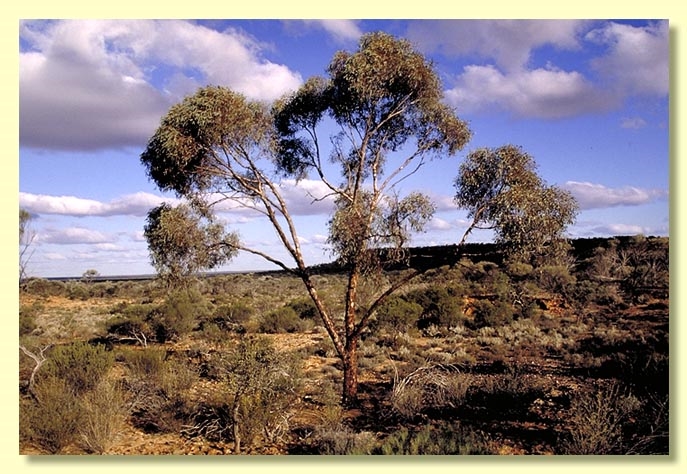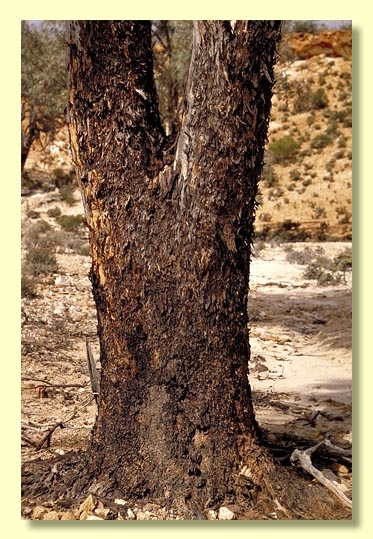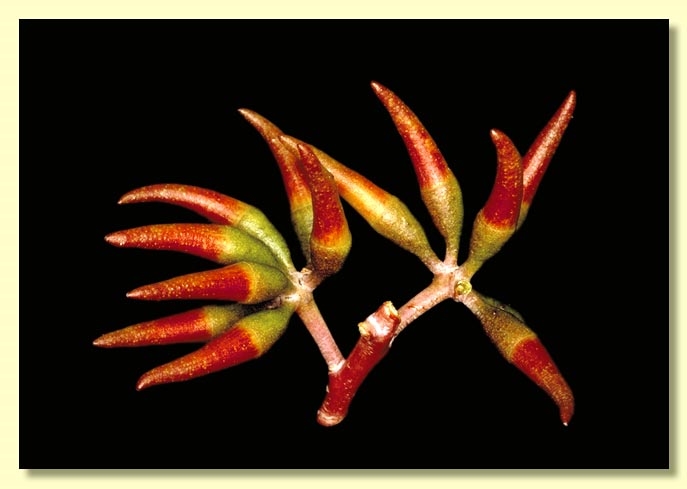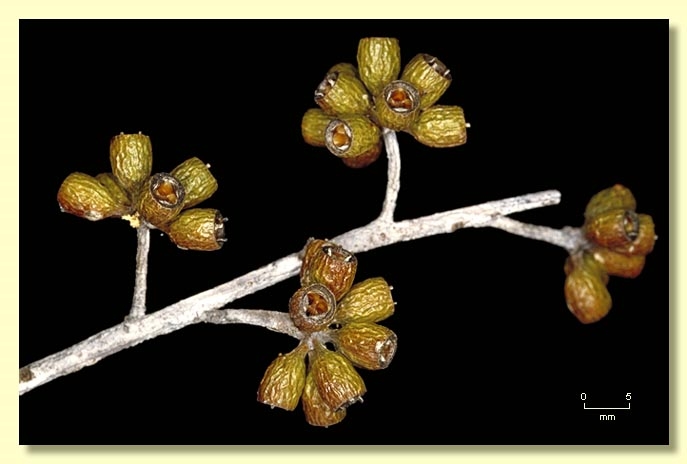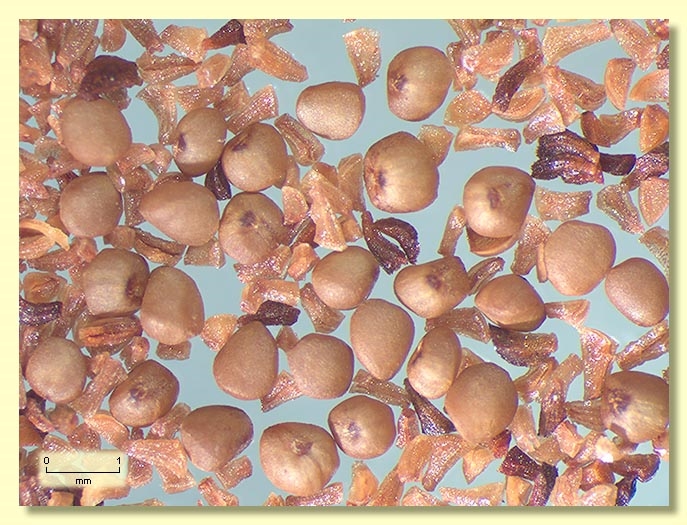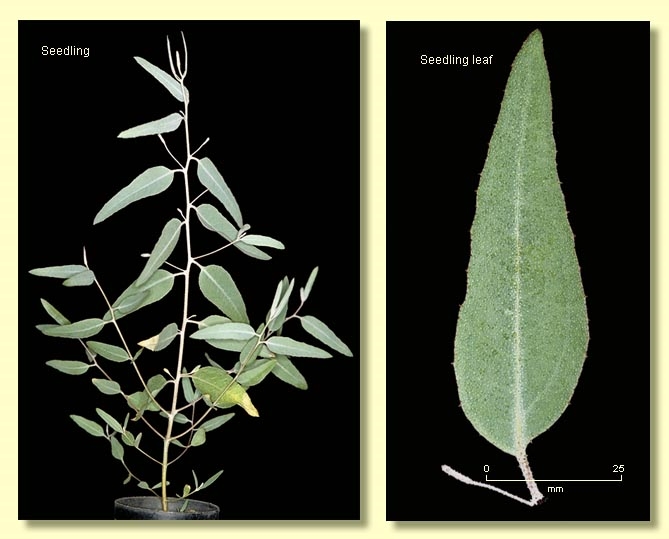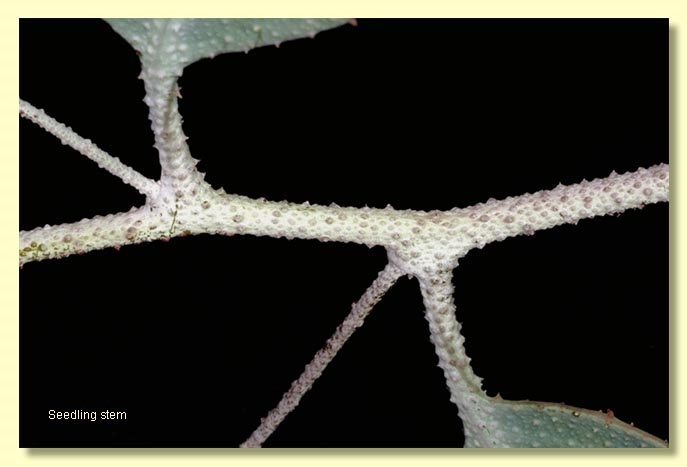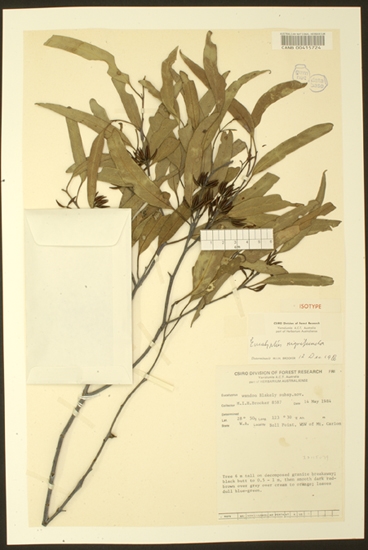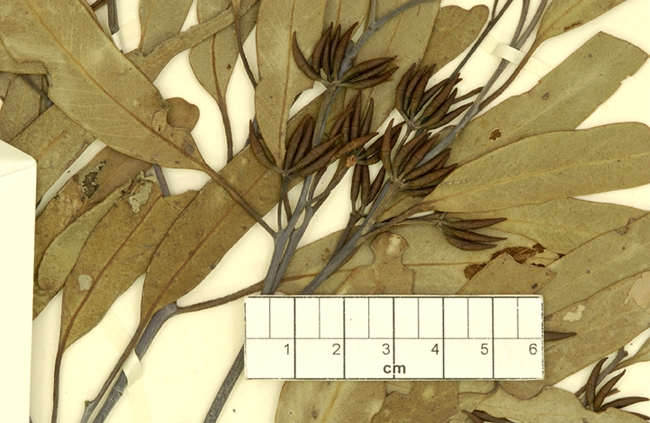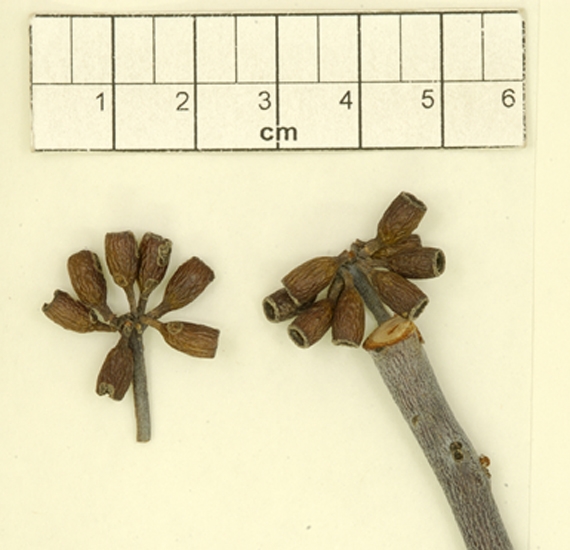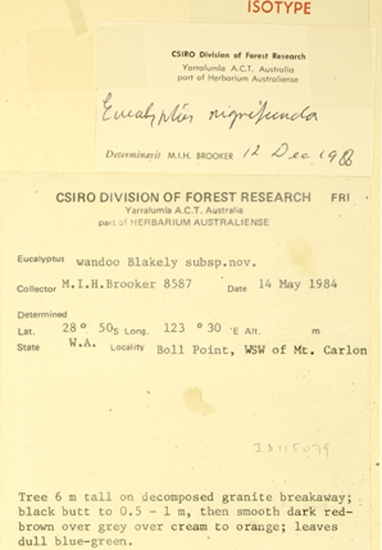Euclid - Online edition
Eucalyptus nigrifunda
Eucalyptus | Symphyomyrtus | Bisectae | Glandulosae | Levispermae | Cubiformes
Bark rough on base of trunk, rarely more, black and flaky, smooth above red-brown over grey to cream or orange.
Branchlets slightly to conspicuously glaucous, pith with oil glands.
Juvenile growth (coppice or field seedlings to 50 cm):not seen, but presumably glaucous with scabrid-warty stems and scarbrid ovate leaves.
Adult leaves alternate, petioles 1–2 cm long; blade lanceolate, 6–11 cm long, 0.7–1.5(2) cm wide, base tapering to petiole, margin entire, apex pointed, concolorous, dull, blue-green, side-veins greater than 45° to midrib, reticulation moderate to dense, intramarginal vein present, oil glands island and intersectional.
Inflorescence axillary unbranched, peduncles widening apically, 1–1.5 cm long, buds ?9, pedicellate (pedicels 0.1–0.2 cm long). Mature buds fusiform (0.9–1.2 cm long, 0.2–0.3 cm wide), non-glaucous though the peduncles and pedicels may be waxy, scar present, operculum conical to horn-shaped, about twice the length of the hypanthium and equal to it at the join, few (one or several) outer stamens erect, most stamens variably deflexed, anthers oblong, versatile, dorsifixed, dehiscing by longitudinal slits, style long and straight, stigma blunt to tapered, locules 3, the placentae each with 4 vertical rows of ovules. Flowers white.
Fruit pedicellate (pedicels 0.1–0.2 cm long), cylindrical to barrel-shaped, 0.4–0.9 cm long, 0.1–0.3–0.5 cm wide, non-glaucous, disc descending vertically, valves 3, near rim level.
Seeds pale to mid-brown, 0.8–1.3 mm long, sub-spherical, surface smooth, hilum ventral/terminal.
Cultivated seedlings (measured at ca node 10): cotyledons Y-shaped (bisected); stems rounded in cross-section, very scabrid, glaucous; leaves always petiolate, opposite for 4–6 nodes then alternate, ovate to lanceolate, 6–9 cm long, 1.5–3 cm wide, slightly glaucous, petioles, leaf margins and both faces of the lamina with conspicuous hairs such that they feel scabrid. The hairs have a multicellular base surmounted by a pair of long cells that are basally appressed, and apically divergent.
Flowering has been recorded in July.
A small tree endemic to Western Australia, restricted to a few breakaways of decomposed granite and adjacent flats south and west of Lake Rason in the Great Victoria Desert north-east of Kalgoorlie. The bark is rough, dark grey or grey-black at the base of the trunk and the adult leaves dull, grey-green to blue-green.
Eucalyptus nigrifunda belongs to Eucalyptus subgenus Symphyomyrtus section Bisectae subsection Glandulosae because the cotyledons are bisected, buds have an operculum scar and the branchlets have oil glands in the pith. Within this subsection E. nigrifunda is one of a group of 14 species that form series Levispermae subseries Cubiformes, characterised by having smooth almost cuboid to sub-spherical seed (not spherical), flattened peduncles that widen apically and buds that are narrowly fusiform with some stamens erect and others variably deflexed.
E. nigrifunda is most closely related to E. capillosa and could be regarded as a rough-butted desert form of that species. The mallee E. livida differs from E. nigrifunda in never having rough bark, lacking glaucescence and having a greyer crown. All three species have scabrid seedling and juvenile growth and in this differ from the well-known more westerly tree species E. wandoo.

